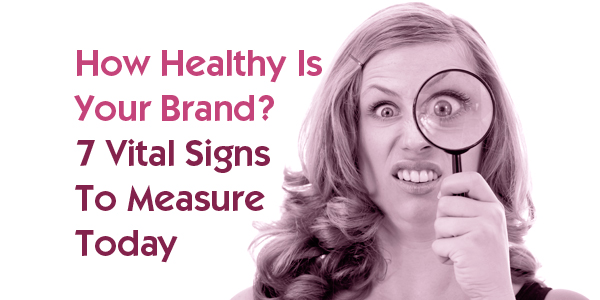
How Healthy Is Your Brand? 7 Vital Signs to Measure Today Using a Brand Audit Health Check
Whenever you have even a slight cold, you probably reach for the medicine cabinet or wonder whether you should visit your doctor. Brands sometimes plateau, stutter a little and hit a downward decline or suddenly drop dramatically losing sales because they’ve lost customer appeal. Like humans, brands can be healthy or unhealthy so a brand audit health check is an invaluable tool because it helps you monitor and manage your brand’s state of health — and consequently its ongoing performance and profitability.
Symptoms of a brand in declining health can be an early warning sign giving you the chance to fix an oncoming problem before it becomes too difficult or worse still, fatal. Here we share seven vital signs to help you assess whether your brand is in less than perfect health and how to remedy them effectively using a brand audit.
1. Is Your Business Steadily Growing or Declining and Losing Relevance? Need to Evaluate its State with a Brand Audit?
A business which has a strong brand strategy supported by consistent execution will see healthy growth each year — assuming the actual product or service is on the money. In a competitive marketplace, the benefits of a well-developed brand strategy shine clear because it gives your business clarity, focus and a competitive edge. The appeal of the brand to its target market, and the congruent communications which support that likability, enables a brand to perform strongly so it generates sales now and into the future.
However, for many businesses, this rose-hued picture feels far from reality. A common reason for this shortfall is because the brand strategy is not well developed to support and provide the essential direction needed in the business.
Unlike other one-off tactics such as price promotion or short-term advertising campaigns, a meaningful and well-crafted brand strategy continues to pay dividends long-term because of how it’s built to underpin the business and provide direction for marketing, design and sales initiatives long after the initial investment.
If your business results are stumbling it may be a good time to re-evaluate your brand strategy using a brand audit so you can see if it’s really strong enough as the essential business driver it’s meant to be.
It’s critical to remember that branding strategy is the bedrock underpinning your whole business. In fact, branding is NOT marketing or design. It provides the direction for marketing and design so it’s essential to map out your brand strategy in detail if you want to build a highly successful and profitable brand over time.
Branding, marketing and design are three separate disciplines performing different functions within a business. Each is essential and interlinked but if one key factor, like brand strategy, is missing its a bit like having a three-legged stool with one leg cut off so the whole business becomes compromised.
A salutary example of this is the shop Woolworth’s. Just a generation ago, Woolworth’s was an iconic retailer whose shops were seen in hundreds of high streets across the U.K. People knew to go there for everything from the pick of the chart-toppers to homewares and gardening tools.
However, that very generalism meant that Woolworth’s lacked a clear, compelling brand proposition. When online ecommerce and retailing took off and consumer changes reduced the size of categories like music or pick n’mix sweets, Woolworth’s was caught in the middle with no relevant, differentiating factors or strong brand promise to set it apart. Because the brand did not articulate strong reasons to choose it and shop with them, its customers voted with their feet and the brand folded.
2. Is Your Marketplace Becoming More Crowded? Could You Use a Brand Audit to Evaluate Opportunities and Vulnerabilities?
Sometimes a business performs well for a sustained period but then gradually plateaus, or even goes into reverse in a downward spiral. There can be many reasons for this. But if the brand positioning is strong, the product is really good and pricing is highly attractive to the target consumers, it can often be because the competitive landscape has changed. Maybe more brands have moved into the same space. It could also be that a competitor has rebranded in a way which increases its appeal to some of your existing customer base.
A strong brand enables you to command a premium price, which is a key reason luxury brands sell for higher price points compared to unbranded or own-label house-brand goods of similar quality.
Remember, 60% of branding is about perception and only 40% is about your actual product or service. A healthy brand enables you to build a highly recognised presence in the market, fend off your competitors and build a fan base or community of loyal customers, on and offline, and maintain strong relationships with your other stakeholders and suppliers. A strong brand also helps enhance relationships with your suppliers, partners and other stakeholders, as well as customers.
Related: Profitable Lessons from Luxury Brand Leaders, Brand Positioning for Premium Pricing
Investment legend Warren Buffett talks about strong businesses having a ‘moat’ which means competitors struggle to break a brand’s success, even when they have a good product proposition, because the leading brand has a well-crafted highly appealing brand strategy.
This means that even when new entrants try to launch in its space, its customers will remain loyal. A brand with a compelling, relevant and consistent message builds a brand identity which drives ongoing sales. That is often why private equity firms like to buy established brands and then coast along on their established brand equity without large investments in new spending.
Consider as an example Freeserve. When they launched in the first Internet boom, with adverts like the one below, it was revolutionary – if somewhat provocative.
Whereas nascent internet providers charged subscription fees, it had no set charges. But an attractive pricing proposition is not a brand or brand strategy, so when other companies slashed fees, Freeserve slumped and its underdeveloped brand personality was partly to blame. Having “free” hardwired into its name meant it had limited permission to talk to customers about other potentially differentiating factors like speed or support quality.
Want to discover more about your standout, №1 powerhouse, premium priced brand working with us so you can increase your profits and leave your competitors way behind?
- Schedule an appointment — we can meet in person or online
- Allow us to create a customised plan for you
- Let’s implement the plan together
- Contact us [email protected] or ring +353 1 8322724 (GMT Dublin/London time 9:00 – 17:30 weekdays)
3. Have You Changed Your Business Model or Strategy? A Brand Audit Health Check Helps Evaluate Strengths and Weaknesses
It is common to talk about a good brand or a weak brand. But as with most things in life, some context is necessary. A brand may be strong in certain areas, but when it endeavours to target different users, switch up its pricing or launch new products which do not fit with its brand identity, brand strategy or brand architecture (product or service portfolio), the brand will struggle to maintain its relevance for customers.
This is a classic symptom of brand stretch or extendability not working because a brand audit wasn’t conducted to evaluate the market, customers, brand strategy and expandability.
It’s a textbook example of why products such as Colgate Beef Lasagna flopped. Consumers were not judging the quality of the lasagne, they simply could not connect the strong oral health positioning of the Colgate brand with a frozen ready meal product.
Related: Boring Brand? How To Create a Unique Brand and Market Positioning
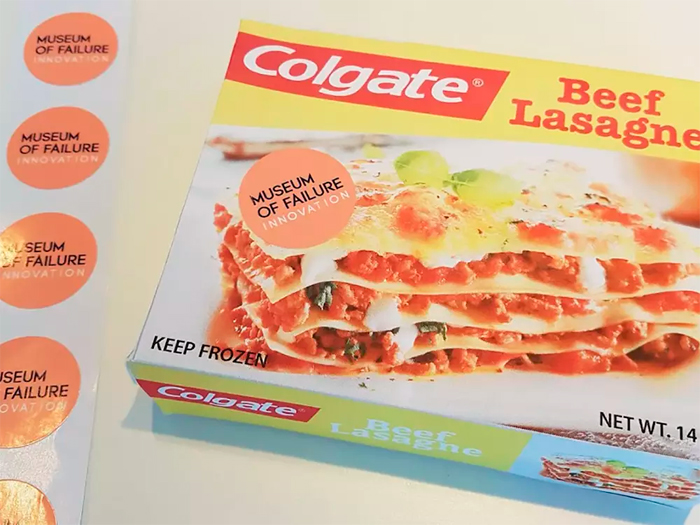
Image via Food and Wine Magazine
Not only can an ill-considered brand extension lead to disappointing results for a new launch, but it can also damage the perception of the brand which in turn damages results in its existing categories.
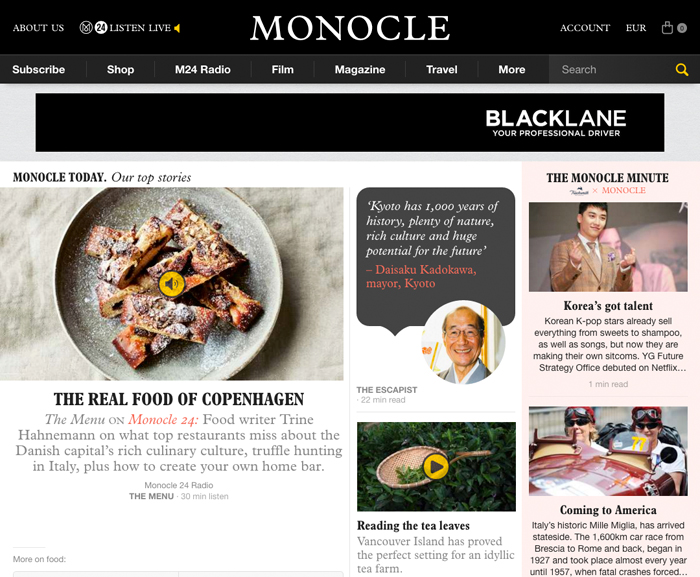
Image via Monocle
An example of a brand which has stayed healthy and ensured it sticks to its identity is Monocle. What started as a magazine has expanded into multiple other channels from coffee shops to podcasts. But as this video below makes clear, all of its activities have been knitted to a consistent set of brand principles and a clear vision of its well-defined target audience so the brand has successfully extended into other channels relevant to its primary purchaser personas.
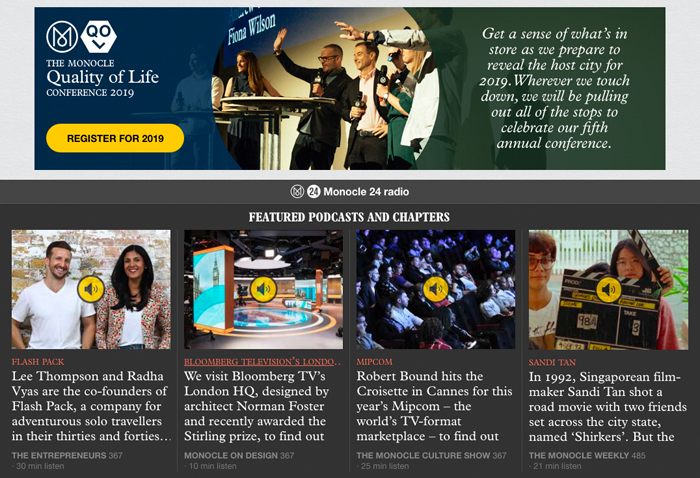
Image via Monocle
Related: Increase Sales Using Buyer Personas, Your Guide to Understanding and Targeting Your Ideal Customers
We know that sometimes it’s a struggle to develop your brand strategy or give your brand a health check with a brand audit so we’ve developed three different ways of working with us to help you build your brand successfully. So depending on your preferences:
- We can give your brand a health check and build your brand for you – find out more here or get in touch [email protected] or ring +353 1 8322724
- Empower you to build your brand – check out the Persona Brand Building Blueprint™ Mastermind here. This is a two-day intensive where you work on your brand with us codifying and mapping out your brand strategy for business growth. Alternatively, join our half-day Branding Accelerator Masterclass for a fast-injection of brand building essentials. Ask about our Personal and Corporate Leadership Brand Alignment Masterclass
- Want a DIY solution? Check out our ‘How to Audit Your Brand’ eprogramme here and How to Build a Brand eprogramme here
4. Are Your Distribution Outlets Challenged or Routes to Market Changing? Use a Brand Audit to Track and Measure Change
Even the smallest brand has to have a route to market. Almost every brand has a love-hate relationship with its distribution network. The right distribution is crucial to maximizing the brand success, whether you rely on an external network or platform or build your own. But distributors bring many challenges. Often they can compromise your business by promoting rival brands. They can delist you or negotiate aggressively so that your financial returns are weakened.
A strong brand is what separates your product or service from the commodity version of the same offering. It is what enables you to command premium pricing versus an identical unbranded or own label product. So, if distributors are squeezing you or demanding onerous terms, they may sense that their business is more important to your brand than your brand is to their business. Ensuring that you have a robust, attractive brand with a unique proposition helps to rebalance negotiation power because you are seen as more important in overall attractiveness and so important to their shoppers.
Related: How Do Challenger Brands Become Market Leaders?
A recent example of this is the move into many markets by the company Amazon. For example, it has been moving into healthcare as this video below explains.
With its deep customer knowledge, big data, logistic efficiency and massive scale, Amazon has the muscle many times over to win consumers cheaper and more easily than established healthcare manufacturers. That is why, as a former Amazon executive explains below, the company is moving aggressively into healthcare as a challenger brand.
Related: How to Build a Brand Like Amazon, Technology Branding and Marketing
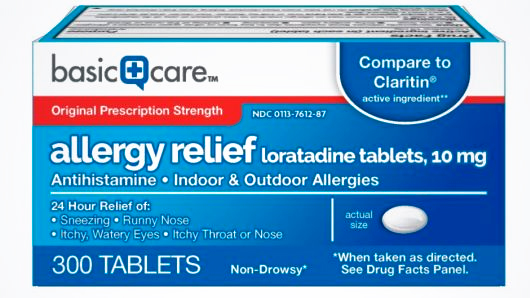
Image via CNBC
Amazon Basic Healthcare is a classic example of how a distribution platform can disrupt an established brand.
Related: Brand Disruption, Be the Disruptor or Be Defeated
Not only does it have a direct relationship with consumers, which the pharmas often lack, it understands their overall lifestyle and purchasing power much better becuase of its existing customer data. A customer may search on Amazon for a book on pregnancy, for example, long before they would go to see a doctor.
In such a challenging commercial environment, a healthy brand has some aces up its sleeve – loyalty, unique brand positioning based on ownable reasons to believe and a perception as experts rather than generalists. But many brands do not focus on building these elements and maintaining them healthily so are exposed to shifts in distribution channels.
Related: Brand Disruption as a Business Framework for Future Growth
5. Are You Lacking Clear Direction For Your Brand and Business? A Strong Brand Audit Enables Laser Focused Clarity
A powerful brand strategy is a bit like a good map. Not only does it tell you and others very clearly where you are right now. It also sets out clear pathways to where you could go next, and beyond.
Sometimes you have a brand which is very healthy and a business which is performing well. However, if you aspire to grow the business in new directions, that may not be enough to help you get there.
Like human DNA, a brand identity and its brand strategy make it very clear what a brand can and cannot do. It sets out clear parameters for what activities are congruent with the brand and what are beyond its reach.
When you look at your current brand strategy and its identity, you and your team should immediately have a clear sense of the sorts of markets into which it could enter successfully and those where the brand as it stands would not support success.
If you cannot tell where your business could go next, it may be because your brand lacks a clear strategy or is simply no longer fit for purpose so a brand audit health check will definitely help get things back on track because it identifies strengths, weaknesses and opportunities for innovation and growth.

Image via Philips
A good example of this is the Dutch-based company, Philips. They were historically well known for products ranging from televisions to light bulbs. As margins shrank in those categories, they dived deeper with a narrower focus in specific niches. Because they have a clearly defined brand they have been able to choose what to focus on by looking to their brand values such as innovation, as this video explains.
6. Do People Actively Engage With and Compliment Your Brand? What Would a Brand Audit Reveal in Terms of Audience Affinity and Sentiment?
If you are at a party and met someone who works for Apple and someone who works for Intel, who would you be more likely to ask about their work?
Apple is attractive to specific groups of people with a very strong brand strategy underpinning that emotional appeal and rationale. Intel is in the same industry and is also a very successful business, but the brand appeal is not the same. Not all technology branding is as appealing as Apple’s.
Related: How Apple Does It, Five Tips for Getting Your $1Tn Brand Personality Right
It’s unlikely that with a small or even medium-sized business, people will be commenting on your brand every day to the same degree. But if your brand strategy is appealing, well thought out and consistently executed, it will attract positive comments within your target community, stakeholders and customers alike.
Whether it’s customer feedback or the enthusiasm of your extremely cohesive and super productive team, the brand strategy underpinning a highly desirable brand has unique, compelling elements which encircle those who are its primary target audience with an embracing glow.
If you never or rarely experience positive feedback or viral-like ‘buzz’ in the market, amongst you’re ideal or secondary audience, it could be a symptom that the brand is not as attractive as it should be.
To give you a better sense of what we’re talking about here, Entrepreneur magazine listed ten brands where buzz and viral-like reach was created by leveraging key elements of what the brand stood for — aspects of it’s bigger brand purpose, vision, mission, promise, differentiators and values.
Top 10 Brands Leveraging What They Stand For so They Actively Engage Their Ideal Customers – What Would a Brand Audit Reveal About Your Customer Interactions?
Chipotle is a brand that puts the integrity of its food quality in terms of source, farming ethos and production process at the top of its value, priorities and mission so it ran a viral campaign which emphasised these elements of its food offering to great effect — triggering a huge response amongst its primary audience.
Beauty brand Dove identified its over-arching brand purpose and in doing so embraced its own definition of “real beauty” — contrary to typical beauty industry norms and stereotypes.
Dove’s bigger purpose of redefining real beauty beyond the superficial, together with supporting female self-esteem, touched a raw cord amongst its predominantly female audience and so triggered a huge viral response to great effect.
This compelling brand purpose is now an integral part of its brand identity and has underpinned the successful execution of multiple campaigns very successfully over the years. It’s largely the reason why Dove is now a multi-billion dollar brand. This advert is one example showing how typical women’s negative self-perception is very different and disempowering, compared to what an artist sketching them perceived.
Evian is a brand which elevates itself above merely the functional benefits of water. Because it can be hard to differentiate one water brand from another Evian had to find a way to create distinction, build target audience awareness and stimulate viral engagement so the brand playfully used babies in its campaigns to evoke health and fun and in doing so created viral-like reach.
Lay’s, and sister brand Walker’s in the UK, crowdsourced flavour combinations from their primary target audience and in doing so generated lots of buzz and connection with their customers. Their customers became brand co-creators which had multiple benefits because it built stronger customer loyalty, increased brand awareness and engagement, built ‘localised’ connectivity despite being a multi-national and gave the brand great insights in customer flavour preferences.
GoldieBlox has products targeted at girls. It was the first small business to be able to air a commercial during the expensive Superbowl advert break. That was because it won financial backing for its ad due to its empowering, fun and specifically targeted branding.
Action camera brand GoPro focuses on versatility in different usage situations. Most users associate the camera with activities like swimming and climbing, but the brand is keen to emphasise that its use is not confined to just leisure situations. Showing the product in action by using it in demanding situations such as a fireman’s work is a means of burnishing its credentials as a tough, durable, all-environment camera whilst also capturing audience interest so stimulating engagement and sharing.
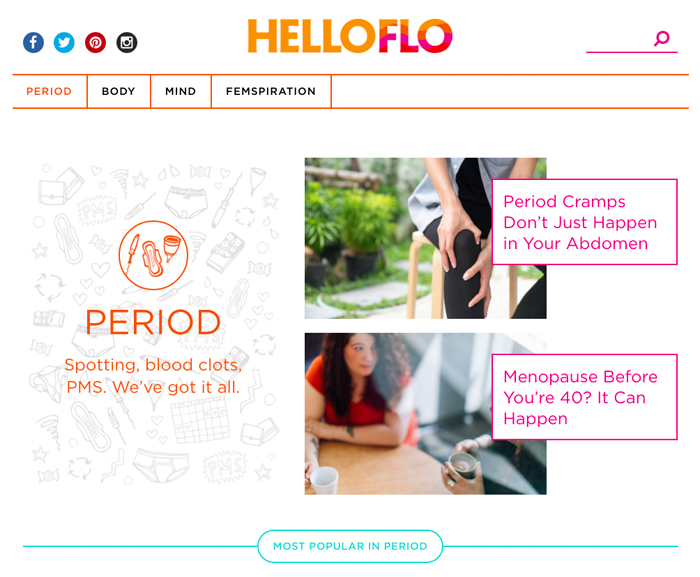
Image via HelloFlo
Some categories have traditionally chosen not to speak to their consumers in a direct tone of voice, as they’re perceived to be culturally sensitive. Deodorant makers have shifted away from this but feminine hygiene adverts still tend to use sanitised product demonstrations and coy turns of phrase. That is why feminine hygiene brand HelloFlo succeeded in getting consumer attention with its brand voice of direct honesty, breaking the mould in the category with its no holds barred communication.
Struggling brand KMart realised shoppers underestimated its range. If they did not know that they could complete their full basket of requirements at KMart, it stood to reason that they would be more likely to go to a competing store. So KMart specifically communicated that the brand offered more than was widely known. This campaign worked well virally as consumers had the chance to surprise one another by saying “Did you know they sold this at KMart?”
Playground brands have an interesting job to do – not only must they appeal to end users, but they also need to appeal to parents as gatekeepers and often to local authorities as the actual purchasers. This need to work with multiple groups in a community could be seen as an irritation, but turning it on its head, playground company Playworld Systems engaged consumers around its core value of bringing play into the community. This got communities talking about the brand.
Just like feminine hygiene, toilet functions usually get little frank discussion in brand communication. Upstart bathroom hygiene brand Poo-Pourri has championed a cheeky, humorous tone-of-voice as part of its brand. Their unique videos combine humour with an element of shock factor to ensure that giggling watchers share them with their friends and social media.
7. Are You Achieving Your Sales Targets and Desired Profit Margins? A Brand Audit is an Effective Measurement Tool
At the end of the day, business success is measured by financial return. What you can expect will vary by industry and market, but a solid business plan has a target profit margin for their brand offerings.
Related: 4 Reasons Why Your Business Profit Starts With Your Brand Mission
A brand which responds to well-understood user needs and desires can command a premium price. This enables it to meet its target profit margin more easily, whatever they may be. A less healthy brand struggles to maintain its brand appeal so resorts to tactics like reduced pricing and one-off deals, which damage profitability and undermine the brand over time.
If you can’t confidently expect to meet your target profit margins in coming financial seasons, it may be that your brand needs a health checkup so you can identify, evaluate and remedy the weaknesses before the business become irreparably damaged.
Apparel retail has suffered many challenges in recent years but poor brand health has also contributed to their woes. A weak brand strategy and poorly developed brand architecture frequently leads to weak brand loyalty, which turns leads to a vicious circle of price cuts which further undermine brand positioning, as this video about JCrew illustrates.
Related: Want Your Customers to be Loyal, Super, Raving Fans? What’s Your Brand Promise?
Want to discover more about your standout, №1 powerhouse, premium priced brand working with us so you can increase your profits and leave your competitors way behind?
- Schedule an appointment — we can meet in person or online
- Allow us to create a customised plan for you
- Let’s implement the plan together
- Contact us [email protected] or ring +353 1 8322724 (GMT Dublin/London time 9:00 – 17:30 weekdays)
Final Word
There are some relatively easy questions you can answer to help assess how healthy your brand is. A healthy brand will be growing and attracting positive comments from people when you mention it.
It will be equipped to face common commercial challenges, such as the entrance of new players in your space or difficult relationships with distribution partners. It will have a clear focus which acts as tramlines within which brand extension makes sense, but outside which it does not.
In this way, your brand and your brand strategy underpin and gives direction to the business. A healthy brand will also deliver on target and achieve your business goals — without nasty surprises.
If your brand is falling short in any of the areas mentioned, it may be worth considering a brand audit health check because a brand audit is a very effective tool enabling you to identify vulnerabilities fast so you can take the much-needed action to fix the problems expeditiously.
Questions to Consider
- Is your brand growth as strong as it has been in previous years?
- What makes your brand stand out from other brands in your category?
- Do all of your products and services completely match your brand positioning congruently and consistently?
- Is your brand helping or hindering you in achieving your current business objectives and targets?
- Would a brand audit health check help you identify your brand’s strengths, weaknesses and opportunities for innovation and growth?
- Does your brand need an evolutionary update, brand revitalisation or radical rebrand to maintain relevance and grow so you can increase your profits?
Your Client Satisfaction Guarantee
- When you work with us we’ll create a customised brand building plan and strategy with clear investment for you tailored to your specific requirements and preferences
- You’ll know each step of your brand building journey before we start because we’ll discuss it, document it and agree on it with you before work commences
- You’ll have timelines, key milestones and deliverables to evaluate and approve for each stage and part of your brand building process
- Because we know the unexpected sometimes happens we can make adjustments along the way if you need it and if something extra is requested we’ll ensure you’re fully appraised about what that entails before committing
- As we achieve pre-agreed objectives you’ll be able to evaluate your brand building work and strategy in progress, coupled with the outcomes to ensure return on investment
Get in touch today because we’d love to get started helping you build your standout, powerhouse brand so you can increase your profits and leave your competitors way behind. Email us [email protected] or ring us +35318322724 (GMT 9:00-17:30) and ask about our VIP Brand Strategy Discovery.
Want to audit your brand yourself? We also offer DIY programmes such as Auditing Analysis Accelerator™ so you can give your brand a health check yourself. Discover more here.
References
- https://markets.businessinsider.com/news/etf/warren-buffett-moat-etf-simple-explanation-for-how-he-invests-and-its-easy-to-replicate-2017-10-1005613232.
- https://www.forbes.com/sites/avidan/2018/05/13/marketers-you-cant-cost-cut-your-way-to-greatness/
- https://qz.com/956795/swedens-museum-of-failure-a-spectacular-catalogue-of-the-worlds-worst-innovations/
- http://www.businessinsider.sg/macys-nordstrom-and-kohls-discount-strategy-2015-11




